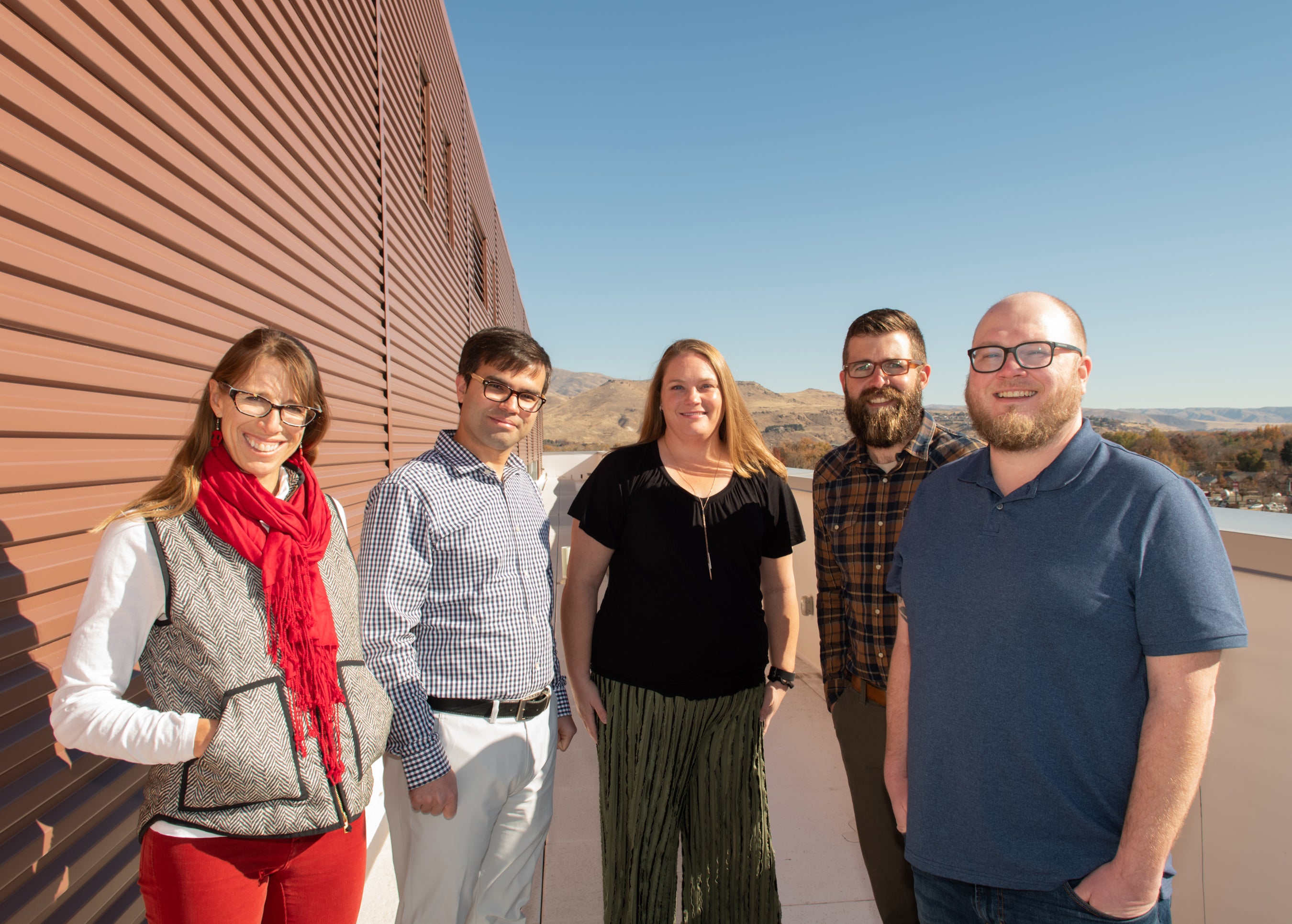
Idahoans are no strangers to wildfire smoke. Nearly every year, for a period of time that may range from days to months, fires both in and from out of state cloud the air with a gray haze that not only impacts residents’ health, but also the tourism and outdoor recreation central to Idaho’s bustling economy.
“Wildfire has a certain area of impact, but smoke travels and impacts more people than the wildfire itself,” said Mojtaba (Moji) Sadegh, an assistant professor in the Boise State Department of Civil Engineering.
But how does the average Idahoan deal with the problem of smoke? Do they evacuate to clean air shelters? Do they make any attempt to filter the air they breathe, or limit their outdoor activity? Despite smoke’s negative impact, little is known about how Idahoans perceive and react to wildfire smoke. Until now, that is.
To find the answers, Mariah Fowler, a native Idahoan and graduate student in the civil engineering program, undertook the goal of conducting the first-large scale smoke perception survey in the Boise metropolitan area.
“Boise has become more and more prone to wildfire smoke mid-July through late-September. Sometimes I have skipped outside activities on smoky days because I know better, but do other people? My drive came from wanting to know what the general public really does during these smoky days,” Fowler said.
Mentored by Sadegh, Fowler conducted research with the help of Stephen Utych, an assistant professor in the School of Public Service; Jen Pierce, an associate professor in the Department of Geosciences; and Luke Montrose, an assistant professor in the Department of Community and Environmental Health.
Through August and September 2018, Fowler’s survey team administered more than 600 in-person surveys across the Boise metropolitan area at public events and locations, such as the Spirit of Boise Balloon Classic, and collected 1,623 online surveys targeted to the Boise State community.
The survey collected a wide range of data pertaining to behaviors and perceptions of smoke, including how people usually receive warnings about air quality and how different demographic factors impact a person’s response to wildfire smoke.
From these surveys, the team made an eye-opening discovery.
“Eighty percent of surveyors consider wildfire smoke to be a hazard, but the majority will not evacuate their homes in the case of a smoke emergency,” said Sadegh.
Of those surveyed, only 40 percent said that they would take future preventative actions to protect themselves from poor air quality due to smoke. Such prevention could include installing high-efficiency particulate air filters in their homes or evacuating to clean air shelters.
Ninety percent of participants also had observed a symptom of smoke exposure, such as itchy eyes, sore throats and headaches. Another 20 percent indicated direct illnesses resulting from the poor air quality caused by smoke. Though smoke is a natural hazard proven to be dangerous and even fatal, monitoring and proving conclusively how many people are sickened or killed by smoke is difficult.
“During Hurricane Harvey, the entire Pacific Northwest was blanketed in smoke: Portland, Seattle, Spokane, Boise, Salt Lake,” said Pierce. “We know how many people died during Hurricane Harvey. But we still don’t know how many people lost their lives because of that smoke. This is a first stab at trying to get a handle on the impacts of smoke on human health.”
The team’s research has been selected for publication in the prestigious journal Scientific Data and can be read in its entirety here: https://www.nature.com/articles/s41597-019-0251-y. This milestone makes Fowler’s goal of informing the policies and procedures to better protect people during smoke hazards even closer to becoming a reality.
“The only way to know what the public is thinking is to ask them and I wanted to ask them in a way that would open the door for honest answers. I feel as though I have accomplished what I set out to do, to find out what the public does during smoke events and pass that information to others who can instill the changes to policies and education,” said Fowler.
The research also was supported by current civil engineering department chair Nick Hudyma, former interim chair Nancy Glenn and collaborators from the University of Idaho, University of Utah, University of California, Irvine, as well as the Idaho Department of Environmental Quality, the Bureau of Land Management, the National Interagency Fire Center and members of the Nez Perce Tribe.